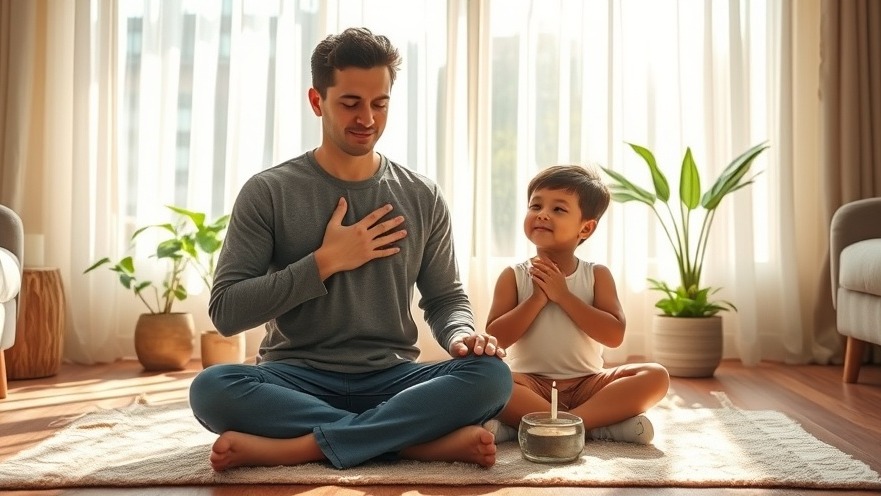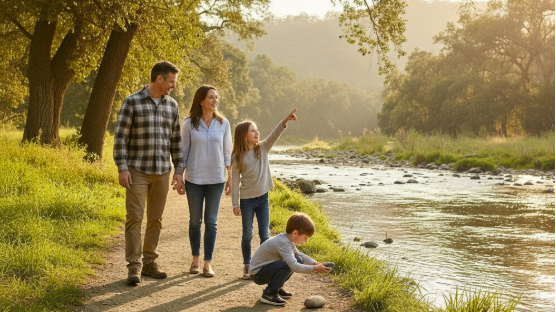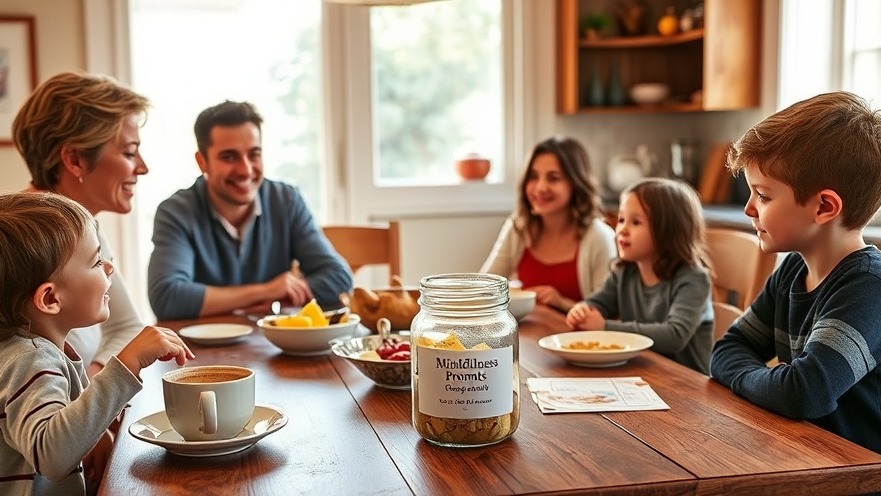
Discover Mindful Parenting: A Local Guide for Sacramento Families
There’s a moment every parent knows too well — when you’re rushing out the door, your child can’t find their shoes, and suddenly your calm disappears in a flash. Later, you wish you’d handled it differently. That’s where mindfulness comes in — not as a miracle cure, but as a way of catching yourself before the storm hits.
Across Sacramento, more parents are learning that mindfulness isn’t about sitting cross-legged in silence. It’s about paying attention — to yourself, your kids, and the small moments in between.
Psychologist and mindfulness researcher Dr. Shauna Shapiro describes it simply:
“Mindful parenting isn’t about being calm all the time. It’s about noticing when you’re not, and choosing compassion instead of reaction.”
When that awareness takes root, family life feels less like firefighting and more like connection.
Little Reminders, Big Lessons
Mindfulness can start with something as small as a sticker.
One Sacramento mom, Lauren Michaels, keeps a few colorful dots around her house — on the fridge, near the front door, even on her kids’ lunchboxes. “They’re our pause buttons,” she laughs.
“Whenever we see one, we take a breath. Sometimes it’s just a moment of calm before homework or bed, but it really shifts the energy.”
Simple visual reminders like these help kids learn to pause and check in with their emotions before they act. A hand-drawn bracelet, a sticker on a backpack, or even a pebble in their pocket can serve as a grounding anchor — a physical cue to take that tiny mindful breath.
Families can get creative at local art spots like Art Beast Studio or The Purple Place Café where children can decorate mindfulness jars or make their own bracelets. It’s playtime with purpose — and a tactile way to teach emotional awareness.

Breathing Together
The next time a tantrum brews, try this:
Ask your child to smell a flower (inhale through the nose), then blow out a candle (exhale through the mouth).
It’s a silly image, but kids remember it — and it works.
Neuroscientists and educators have long found that breathing deeply slows heart rate and shifts the nervous system from stress to calm. Dr. Dan Siegel, co-author of The Whole-Brain Child, explains,
“When kids pause to breathe, they engage the thinking part of their brain — the one that helps them make choices — instead of the emotional part that reacts on impulse.”
In Sacramento homes, that might look like a deep breath before homework, a three-count exhale before turning off the TV, or a shared moment of quiet gratitude before dinner.
Over time, these mini-meditations weave mindfulness naturally into family life, no “lesson” required.
When Feelings Show Up, Let Them
Kids don’t always have words for what they feel. Sometimes it’s a stomped foot, a pout, or a door slam. Teaching them to recognize those “early warning signs” — what mindfulness educator Susan Kaiser Greenland calls “funny feelings” — helps them respond instead of react.
Try asking gentle questions: “Where do you feel that in your body?” or “Does it feel tight or heavy?” These prompts help kids locate emotion physically, which is the first step to processing it.
Child therapist Rachel Porter, LMFT, sees this often in her practice:
“Once a child can name what’s happening — ‘I feel nervous,’ or ‘I’m angry’ — the emotion loses its grip. It’s no longer controlling them.”
At home, parents can create an “emotion board” with pictures or emojis. Let children move a magnet or card that matches how they feel each day. It’s a fun, low-pressure way to build emotional vocabulary and normalize feelings.

The Nature Connection
There’s something about the hush of the American River trails or the soft breeze at McKinley Park that invites stillness. Nature naturally slows us down — and that makes it the perfect setting for mindfulness.
Next time you’re outside, ask your kids to notice five things they can see, four they can hear, three they can touch, two they can smell, and one they can taste. It’s called the 5-4-3-2-1 grounding technique, and it gently pulls their attention into the present.
Local yoga instructor Jenna Alvarez often brings her family outdoors for these simple exercises.
“You can see the shift right away,” she says. “They start to notice the tiny things — birds, textures, even the way light changes through the trees. That’s mindfulness in motion.”
Try it on a weekend stroll through the Effie Yeaw Nature Center or William Land Park. Mindfulness doesn’t always have to mean stillness — sometimes, it’s a walk, a breeze, or the crunch of gravel under little sneakers.
The Mirror Effect
Children don’t learn mindfulness from what we tell them — they learn it from what we do.
If you’ve ever caught your child repeating something you said in frustration, you already know how closely they mirror your behavior. That mirroring works both ways. When they watch you pause, breathe, and calmly work through emotions, they’re learning emotional regulation firsthand.
You don’t have to be perfectly calm. It’s enough to say, “I’m getting frustrated right now, so I’m going to take a few breaths before I talk.” That transparency is powerful. It teaches that emotions aren’t bad — they’re just signals.
Sacramento parent coach Marissa Hughes often reminds clients,
“Children don’t need perfect parents. They need present ones. Modeling mindfulness shows them it’s okay to have big feelings — and that calm is something we can choose.”

Building a Rhythm That Sticks
Like any skill, mindfulness needs consistency more than intensity. Think of it as small drops filling a bucket.
A few ideas for local families:
Morning gratitude minute: Share one thing you’re thankful for at breakfast.
Transition rituals: Before getting out of the car, take a single breath together.
Mindful stories: Try a bedtime tale that encourages reflection, like Moody Cow Meditates or Breathe Like a Bear.
Family mindfulness jar: Write prompts like “Take three breaths,” “Listen for one minute,” or “Notice something beautiful.” Draw one each day.
Libraries around Sacramento — such as the Pocket-Greenhaven or Carmichael branches — occasionally host story hours that incorporate mindfulness and gentle movement. These are simple, screen-free ways to help children find focus and peace.
When Extra Support Helps
Even the most mindful families face challenging days. If your child struggles with anxiety, attention, or emotional regulation, mindfulness-based therapy can be a valuable tool.
Sacramento offers several credible options:
The Center for Mindful Living (Midtown): Family mindfulness workshops and parenting support groups.
Sutter Health Integrative Health Program: Mindfulness-Based Stress Reduction (MBSR) courses adapted for parents and kids.
UC Davis Mind-Body Wellness Program: Pediatric mindfulness and yoga-based emotional health programs.
Reaching out for support doesn’t mean you’ve failed — it shows mindfulness in action: noticing, accepting, and seeking help when needed.
A City That Breathes Together
Sacramento’s community vibe makes it an ideal place for mindful living. Weekend farmers markets, bike paths, and riverside trails all offer families the space to slow down.
Imagine a family picnic by the river — phones tucked away, everyone simply listening to the water. These small pauses accumulate into something powerful: presence.
Dr. Shapiro puts it beautifully:
“Mindfulness isn’t about getting it right; it’s about beginning again, moment by moment.”
For parents, that might mean forgiving yourself after a rough morning, or taking that deep breath before the next conversation.
In the end, mindfulness isn’t another parenting task — it’s a way of living that helps Sacramento families feel more grounded, patient, and connected.
So next time your day spins a little too fast, take that one conscious breath. You might just find that calm isn’t something to chase — it’s something already waiting inside you.
Looking for ways to stress less and stay centered? Visit Mind Matters for quick mindfulness tips, then head back to Sacramento Living Well for more ways to feel your best every day.
---
Authored by the Sacramento Living Well Editorial Team — a publication of DSA Digital Media, dedicated to highlighting wellness, local living, and inspiring community stories throughout Greater Sacramento.
 Add Row
Add Row  Add
Add 





Write A Comment